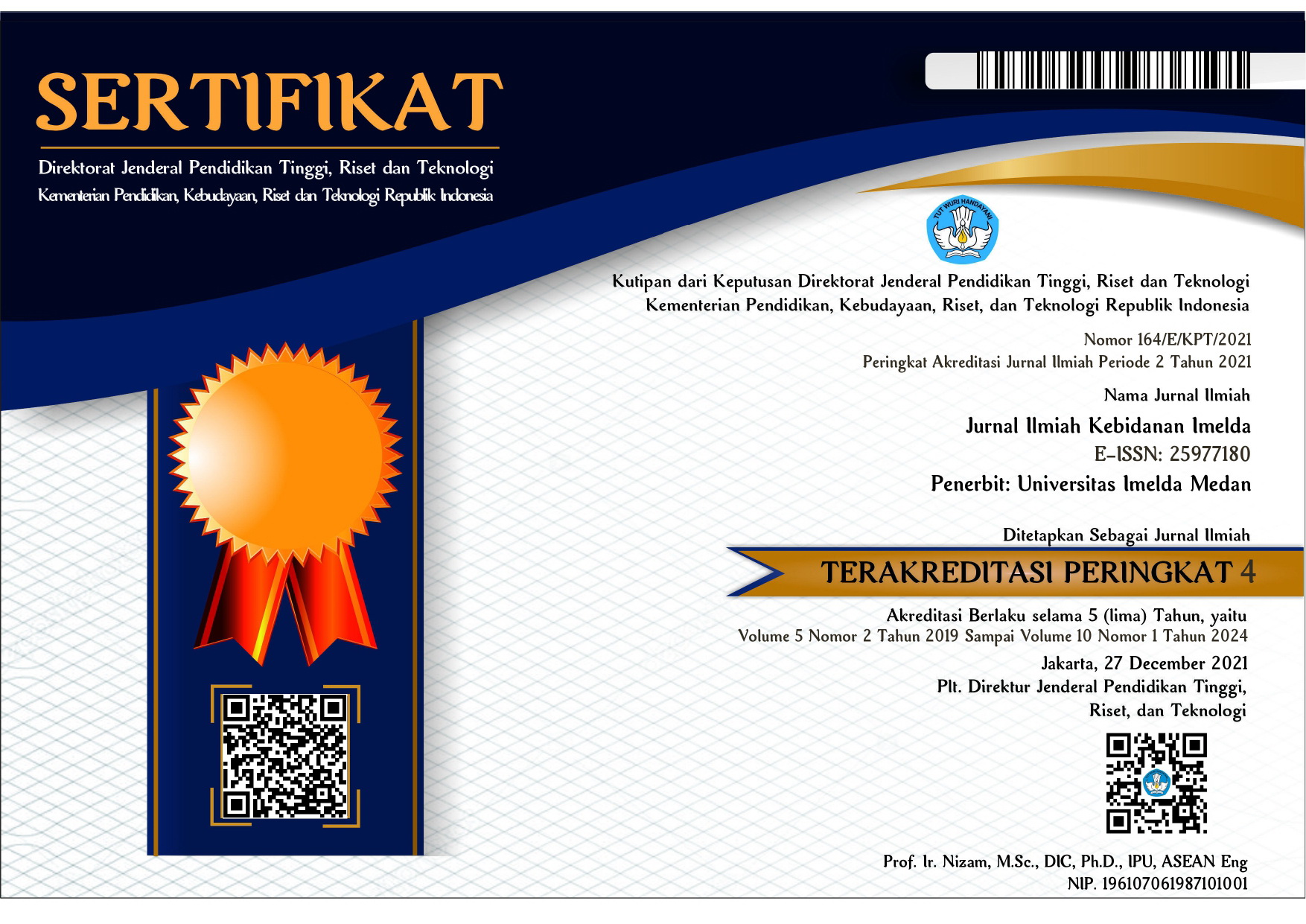PENINGKATAN KADAR HEMOGLOBIN DENGAN EKSTRAK BIT MERAH (Beta vulgaris L) PADA TIKUS Rattus norvegicus BUNTING ANEMIA
DOI:
https://doi.org/10.52943/jikebi.v9i1.1182Kata Kunci:
Haemoglobin, Beetroot, Pregnant rat, AnemiaAbstrak
Anemia is a major community health problem and is often found in communities and countries, especially in developing countries including Egypt and Saudi Arabia. norvegicus anemia. The study design was a pure experimental design with a pre-posttest control group design on 30 pregnant Rattus norvegicus white rats which were divided into 5 treatment groups randomly. There were 5 treatment groups, namely the negative control group, the positive control group was only induced into 5 treatment groups randomly. There were 5 treatment groups, namely the negative control group, the positive control was only induced, treatment I was induced by phenylhydrazine, treatment I was induced by phenylhydrazine with a dose of 0.04 mg/kg/BW + Red beet extract 150 mg/KgBW, treatment II was induced by phenylhydrazine. with a dose of 0.04 mg/kg/BW + red beet extract 300 mg/KgBW and treatment III was induced by phenylhydrazine at a dose of 0.04 mg/kg/BW + red beet extract was given 450 mg/KgBW. Samples were selected according to inclusion criteria, namely pregnant female white rats, female, 2-3 months old, body weight 120-200 grams, healthy and not anatomically deformed. Analysis of the data used is one-way ANOVA. there was a significant difference between data on hemoglobin levels of pregnant rats before and after treatment in the negative control group, treatment I and treatment II with p value <0.05. Giving red beet extract to pregnant rats with anemia can increase hemoglobin levels.
Referensi
[2] I. Gheith and A. El-Mahmoudy, “Laboratory evidence for the hematopoietic potential of beta vulgaris leaf and stalk extract in a phenylhydrazine model of anemia,” Brazilian J. Med. Biol. Res., vol. 51, no. 11, pp. 1–8, 2018, doi: 10.1590/1414-431x20187722.
[3] Who and M. Chan, “Haemoglobin concentrations for the diagnosis of anaemia and assessment of severity,” Geneva, Switz. World Heal. Organ., pp. 1–6, 2011, doi: 2011.
[4] G. Stephen, M. Mgongo, T. Hussein Hashim, J. Katanga, B. Stray-Pedersen, and S. E. Msuya, “Anaemia in Pregnancy: Prevalence, Risk Factors, and Adverse Perinatal Outcomes in Northern Tanzania,” Anemia, vol. 2018, 2018, doi: 10.1155/2018/1846280.
[5] S. Gautam, H. Min, H. Kim, and H. S. Jeong, “Determining factors for the prevalence of anemia in women of reproductive age in Nepal: Evidence from recent national survey data,” PLoS One, vol. 14, no. 6, pp. 1–17, 2019, doi: 10.1371/journal.pone.0218288.
[6] O. C. Ezeigwe, F. A. Nzekwe, O. F. Nworji, C. F. Ezennaya, E. L. Iloanya, and K. K. Asogwa, “Effect of aqueous extract of f. Capensis leaves and its combination with c. aconitifolius leaves on essential biochemical parameters of phenylhydrazine-induced anemic rats,” J. Exp. Pharmacol., vol. 12, pp. 191–201, 2020, doi: 10.2147/JEP.S254003.
[7] L. Mulcahy, “All the Beetroot Nutrition Facts and Top Health Benefits to Know,” Hearst Magazine Media, 2021. https://www.goodhousekeeping.com/health/diet-nutrition/a38281795/beetroot-benefits/ (accessed Sep. 17, 2022).
[8] H. Hasanalita, A. Amir, and D. Defrin, “Efektifitas Ekstrak Jambu Biji Terhadap Kadar Hemoglobin Pada Tikus Bunting,” J. Kesehat. Andalas, vol. 8, no. 2, p. 290, 2019, doi: 10.25077/jka.v8i2.1004.
[9] Word Health Organization, “Anaemia,” Word Health Organization, 2020. https://www.who.int/health-topics/anaemia#tab=tab_1.
[10] Y. Chen, H. Feng, and S. Jeng, “Zinc Supplementation Stimulates Red Blood Cell Formation in Rats,” Int. J. Mol. Sci., vol. 19, pp. 1–17, 2018, doi: 10.3390/ijms19092824.
[11] S. O. Ainiyati, Nurdianan, and N. A. R. H, “Journal of Issues in,” J. Issues Midwifery, vol. 6, no. 1, pp. 10–25, 2022, doi: 10.21776/ub.JOIM.2022.006.01.2.
[12] E. Dreny, M. A. Mahmoud, and E. Hadidy, “Effect of Feeding Iron Deficiency Anemia Rats on Red Beetroots Juices,” J. Food Dairy Sci, vol. 10, no. 8, pp. 243–247, 2019.
[13] N. Maulina, G. Amalasari, M. L. Strain, and D. Ditsch, “ARTIKEL PENELITIAN Perbandingan Efektivitas Madu dengan Ekstrak Buah Bit ( Beta Vulgaris ) terhadap Peningkatan Kadar Hemoglobin ( Hb ) Pada Mencit Putih Jantan ( Mus Musculus L ) Strain Double Ditsch Webster,” Anat. Med. J., vol. 1, no. 3, pp. 167–178, 2018.
[14] H. Al Balushi, A. Hannemann, D. Rees, J. Brewin, and J. S. Gibson, “The Effect of Antioxidants on the Properties of Red Blood Cells From Patients With Sickle Cell Anemia,” J. Front. Physiol., vol. 10, no. August, pp. 1–9, 2019, doi: 10.3389/fphys.2019.00976.










